Introduction
Autism spectrum disorder (ASD) in adults often presents unique challenges that can significantly differ from those seen in children. Recognizing the signs and symptoms in adults, such as difficulties in social interactions, understanding social cues, and engaging in repetitive behaviors, is crucial for proper evaluation and support. Additionally, heightened sensitivity to sensory inputs and struggles with changes in routine are common.
Unfortunately, many autistic adults face a lack of specialized services and support systems once they graduate high school, leaving a critical gap in care that needs to be addressed. This article explores the importance of seeking an autism diagnosis as an adult, the types of professionals involved in the diagnostic process, the tools and methods used for diagnosis, and the challenges and considerations that come with diagnosing autism in adults. By understanding these aspects, it becomes possible to provide the necessary support and resources to ensure the well-being and inclusion of autistic adults in society.
Signs and Symptoms of Autism in Adults
Autism spectrum disorder (ASD) presents unique challenges in individuals that can differ significantly from those experienced by children. Adults with ASD often face difficulties in social interactions, understanding social cues, and may exhibit repetitive behaviors. Additionally, they may have heightened sensitivity to sensory inputs and struggle with changes in routine. Recognizing these symptoms is essential for proper evaluation and support.
A significant challenge for adults with ASD is the lack of specialized services and support systems. According to Christopher McDougle, the Nancy Lurie Marks Professor in the Field of Autism at Harvard Medical School, many autistic individuals lose access to services once they graduate high school, leaving them without necessary guidance for ongoing medical care. This gap in care emphasizes the need for initiatives such as the Adult Autism Health Resources program, which aims to enhance support for individuals with developmental disorders and educate clinicians, caregivers, and self-advocates.
Furthermore, recent statistics from the Centers for Disease Control and Prevention estimate that about 1 out of 45 individuals in the U.S., or approximately 5.4 million people aged 18 or older, have ASD. This underscores the urgent need for competent, coordinated care across medical specialties and lifespan transitions.
In addition to healthcare challenges, adults with profound autism, who require extensive functional assistance, face significant stigmatization. Research has indicated that a significant portion of people on the spectrum may face stigma because of the type and severity of their symptoms. Improving service planning for this population is critical, as many profoundly autistic individuals are unable to advocate for themselves and need intensive support services throughout their lives.

Why Seek an Autism Diagnosis as an Adult?
Obtaining a diagnosis of neurodevelopmental disorder in later life can provide considerable insight and comprehension into an individual's actions and difficulties, resulting in tailored assistance, improved self-awareness, and better coping techniques. According to the Centers for Disease Control and Prevention, approximately 1 in 45 individuals in the U.S., or about 5.4 million people aged 18 or older, have autism spectrum disorder (ASD). This highlights the importance of proper diagnosis and the subsequent access to resources and communities that offer substantial support.
The introduction of programs such as the Adult Autism Health Resources by Harvard Medical School, financed by the Nancy Lurie Marks Family Foundation, highlights the essential requirement for skilled, organized support for individuals on the spectrum. Christopher McDougle, faculty director of the initiative, emphasizes that people on the spectrum often lose access to many services after high school, stressing the need for ongoing medical care similar to that available to neurotypical people. This initiative seeks to inform healthcare providers, support personnel, and self-advocates, guaranteeing a far-reaching global influence and an important advancement towards recognizing and tackling the requirements of the older neurodiverse community.
Access to a diagnosis as a person not only opens doors to necessary medical care but also connects individuals to communities that provide understanding and solace. As awareness and advocacy efforts continue to grow, the acknowledgment and support for individuals on the autism spectrum will undoubtedly lead to improved quality of life and inclusion in society.
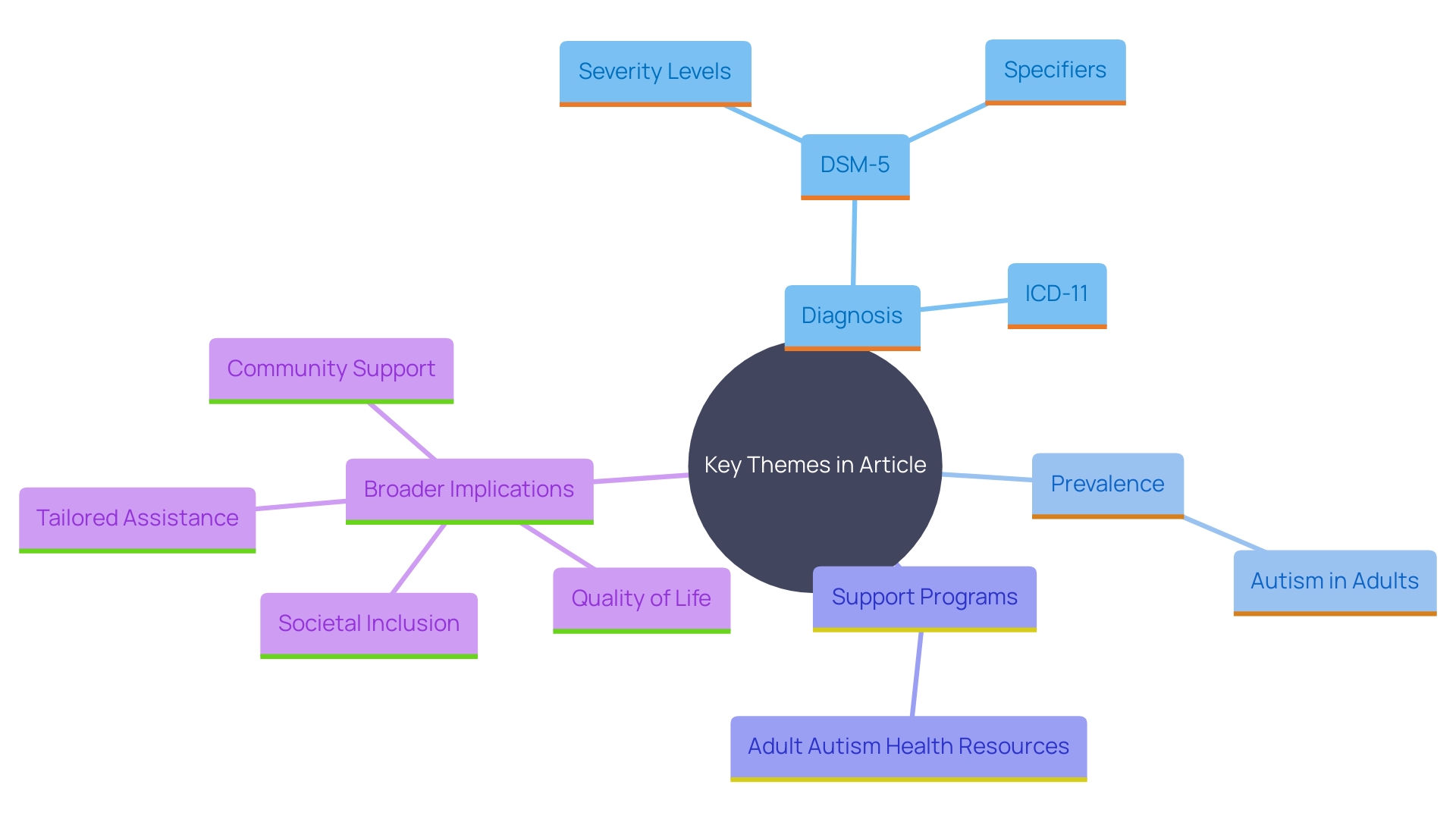
Types of Professionals Who Can Diagnose Autism in Adults
Identifying this condition in grown individuals necessitates the knowledge of different specialists, such as psychologists, psychiatrists, neurologists, and certified clinical social workers. Each expert offers distinct perspectives and abilities, aiding in a thorough comprehension of the varied manifestations in grown individuals. It's crucial to select a provider experienced in autism in grown-ups, as the condition's manifestations can differ significantly from those seen in children. According to Harvard Medical School's Adult Autism Health Resources initiative, there is a substantial need for competent, coordinated care across medical specialties. The initiative aims to educate healthcare providers and caregivers, emphasizing the significance of personalized care for individuals on the spectrum. Christopher McDougle, director of the Lurie Center for Autism, emphasizes the critical need for ongoing medical care for people on the spectrum, noting that once they graduate high school, they often lose access to many services. This initiative highlights the importance of quality medical care for autistic people, akin to that offered to neurotypical counterparts, to ensure their wellbeing and support.
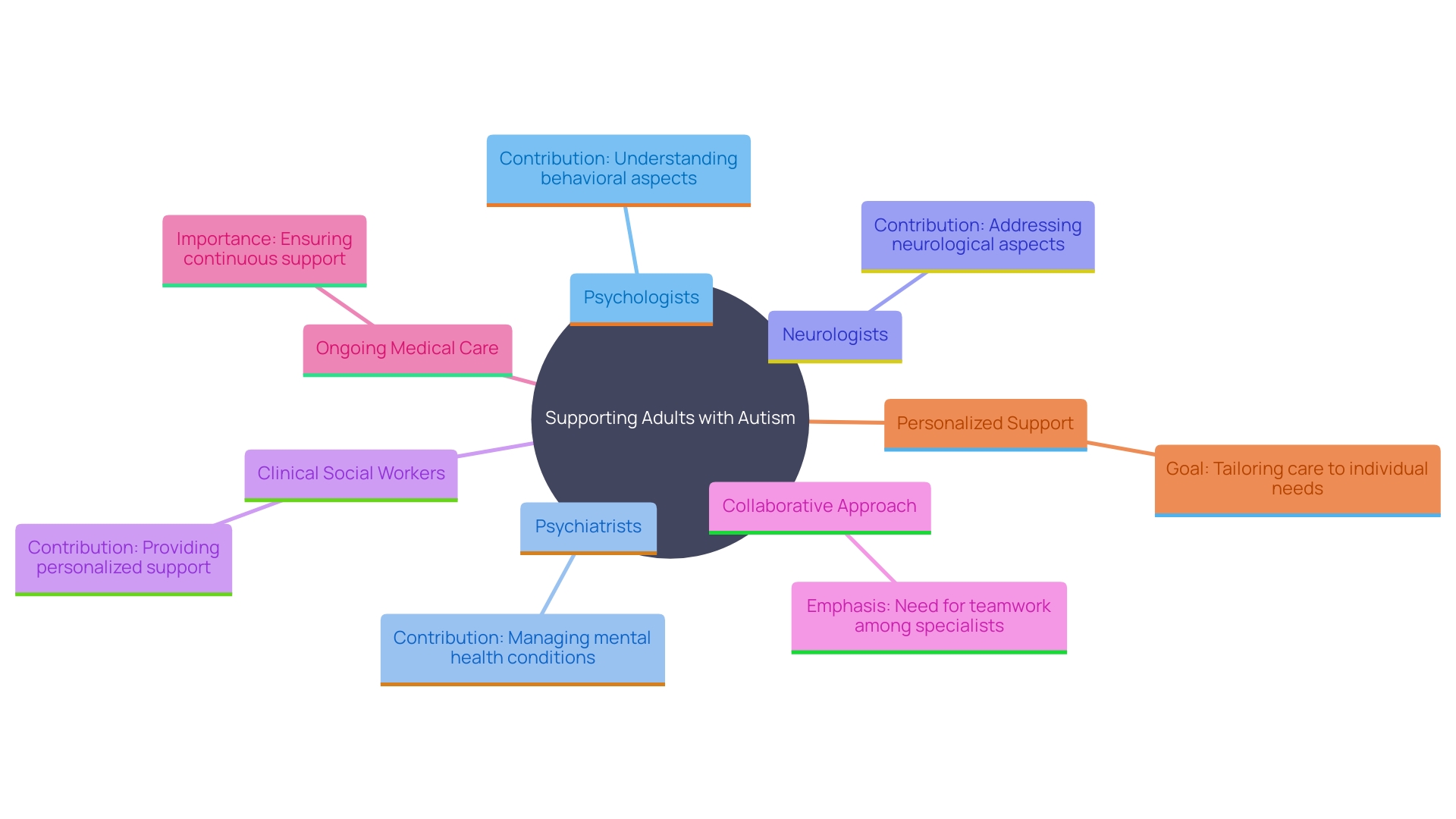
Diagnostic Tools and Methods Used for Adult Autism Diagnosis
The diagnostic process for adults typically involves a combination of structured interviews, questionnaires, and observational assessments. Instruments like the Autism Diagnostic Observation Schedule (ADOS) and the Autism Diagnostic Interview-Revised (ADI-R) are frequently utilized to collect thorough information about a person's history and behavior. Additionally, the RAADS-R and RAADS-14 are also utilized and have been shown to provide accurate results across various demographics. These tools help in identifying key behavioral patterns and developmental histories that align with the criteria outlined in the DSM-5. Prompt and precise identification is essential, as it enables timely assistance and support, enhancing the overall quality of life for individuals with developmental differences.
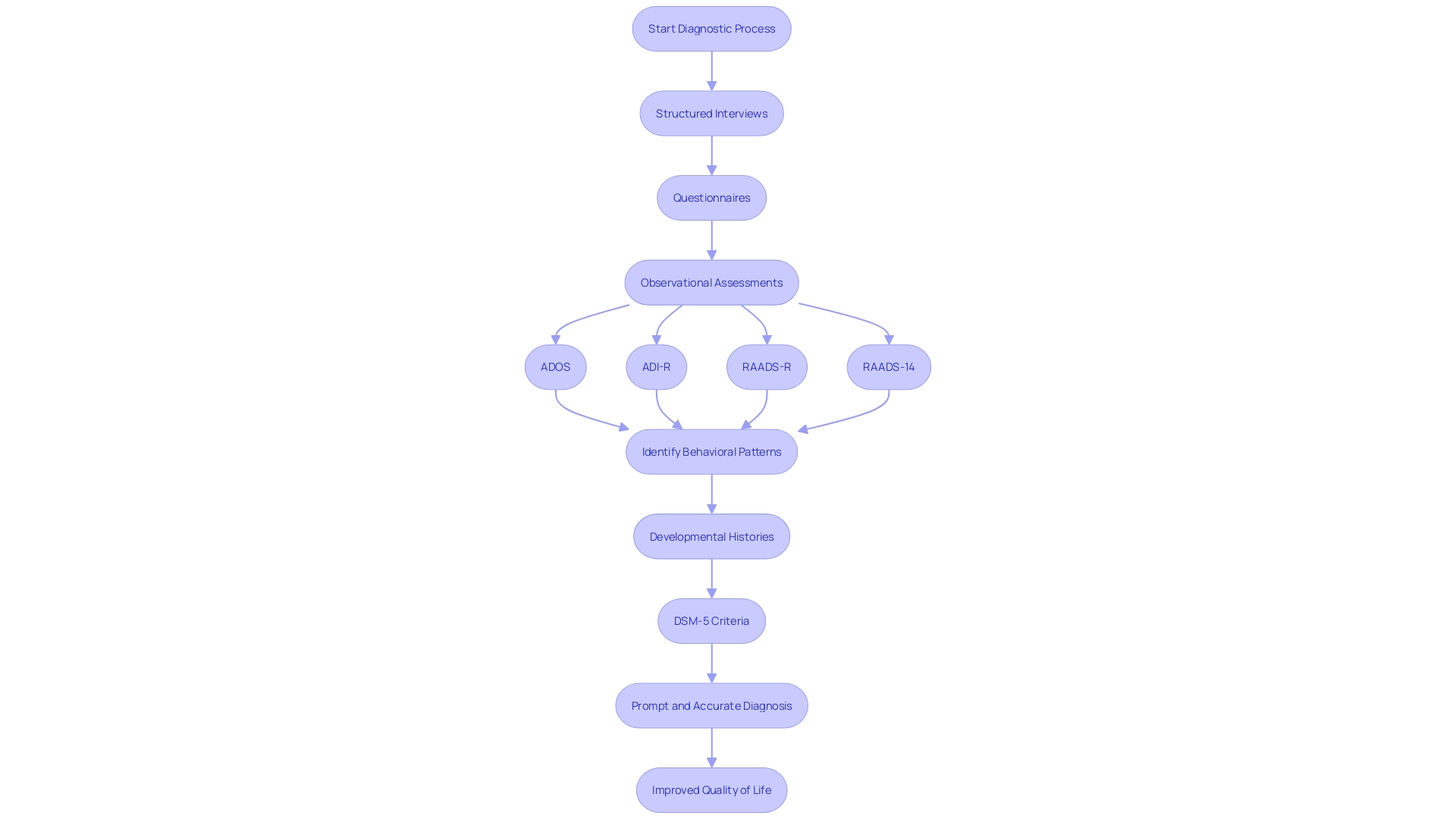
The Diagnostic Process: What to Expect
The diagnostic journey for spectrum disorder (ASD) typically starts with an initial consultation where a professional gathers comprehensive information about the child’s developmental history and current challenges. According to the American Psychiatric Association's Diagnostic and Statistical Manual, Fifth Edition (DSM-5), standardized criteria are used to help diagnose ASD. This process often includes descriptions from parents or caregivers and observations by professionals.
Following the initial consultation, formal assessments are conducted, utilizing tools such as the Autism Diagnostic Interview-Revised (ADI-R) and the Autism Diagnostic Observation Schedule (ADOS-2). These tools are designed to assess communication, social interaction, and behavior. The feedback sessions that follow these assessments provide valuable insights into the findings, enabling a deeper understanding of the diagnosis.
However, significant delays in diagnosis are common, with many families waiting over four months for an evaluation, and some even facing waitlists of over a year. This delay can prevent children from accessing early interventions during critical developmental periods. A study by Scott Badesch highlights the urgent need to expand and empower the pool of providers capable of evaluating and diagnosing children to mitigate these delays and ensure timely access to necessary support and services.
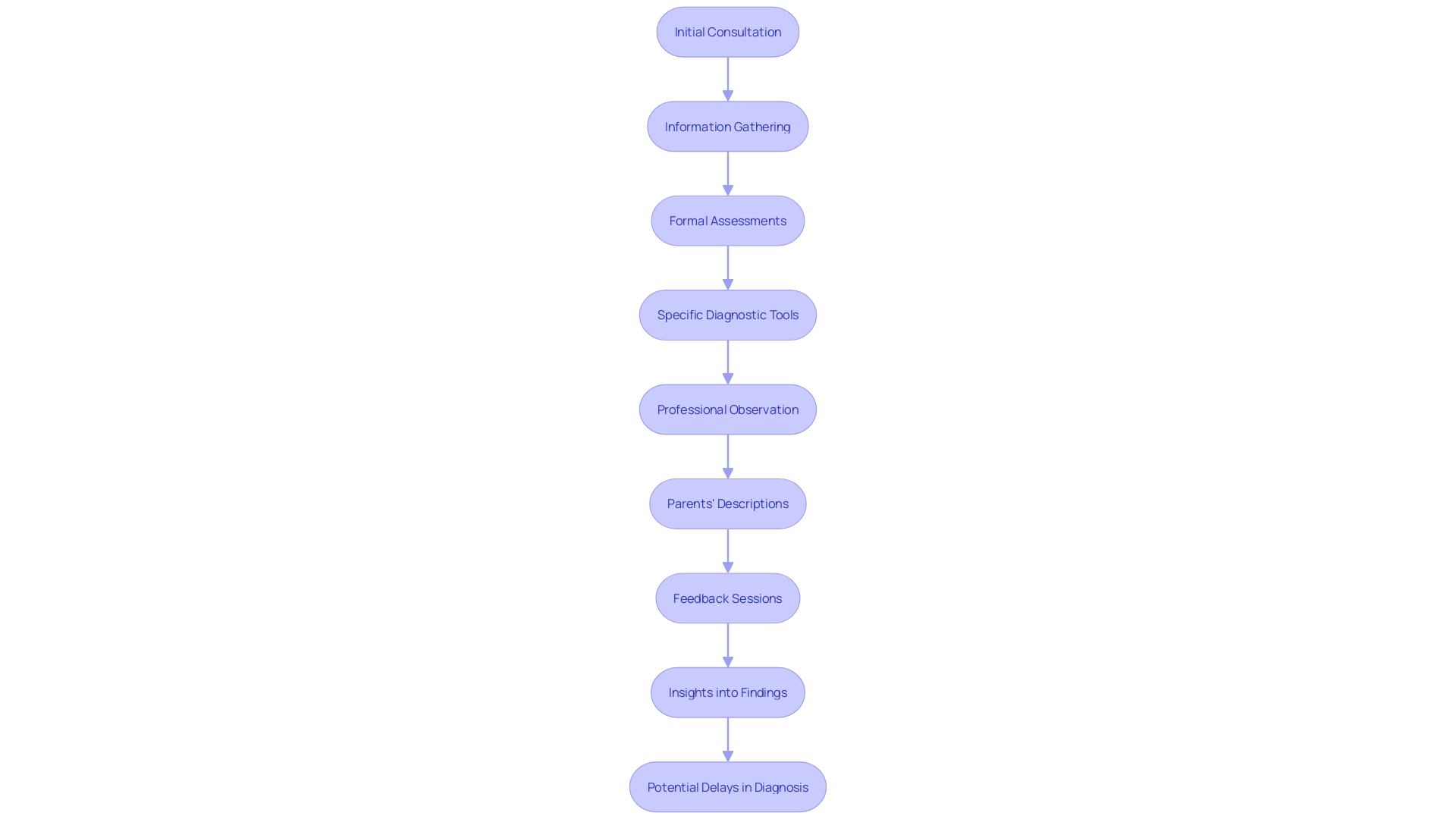
Importance of Comprehensive Assessment and Clinical Expertise
Precise diagnosis of the condition relies on a thorough evaluation, including both parents' or caregivers' accounts of the child's growth and expert observations of the child's conduct. The American Psychiatric Association's Diagnostic and Statistical Manual, Fifth Edition (DSM-5), provides standardized criteria for diagnosing spectrum disorder (ASD). Professionals must be vigilant about co-occurring conditions like anxiety or depression, which can complicate the presentation of the condition. Clinical expertise is essential in interpreting results and providing tailored recommendations for support and intervention. In some cases, primary care providers may refer families to specialists such as neurodevelopmental pediatricians, developmental-behavioral pediatricians, or child neurologists for further evaluation.
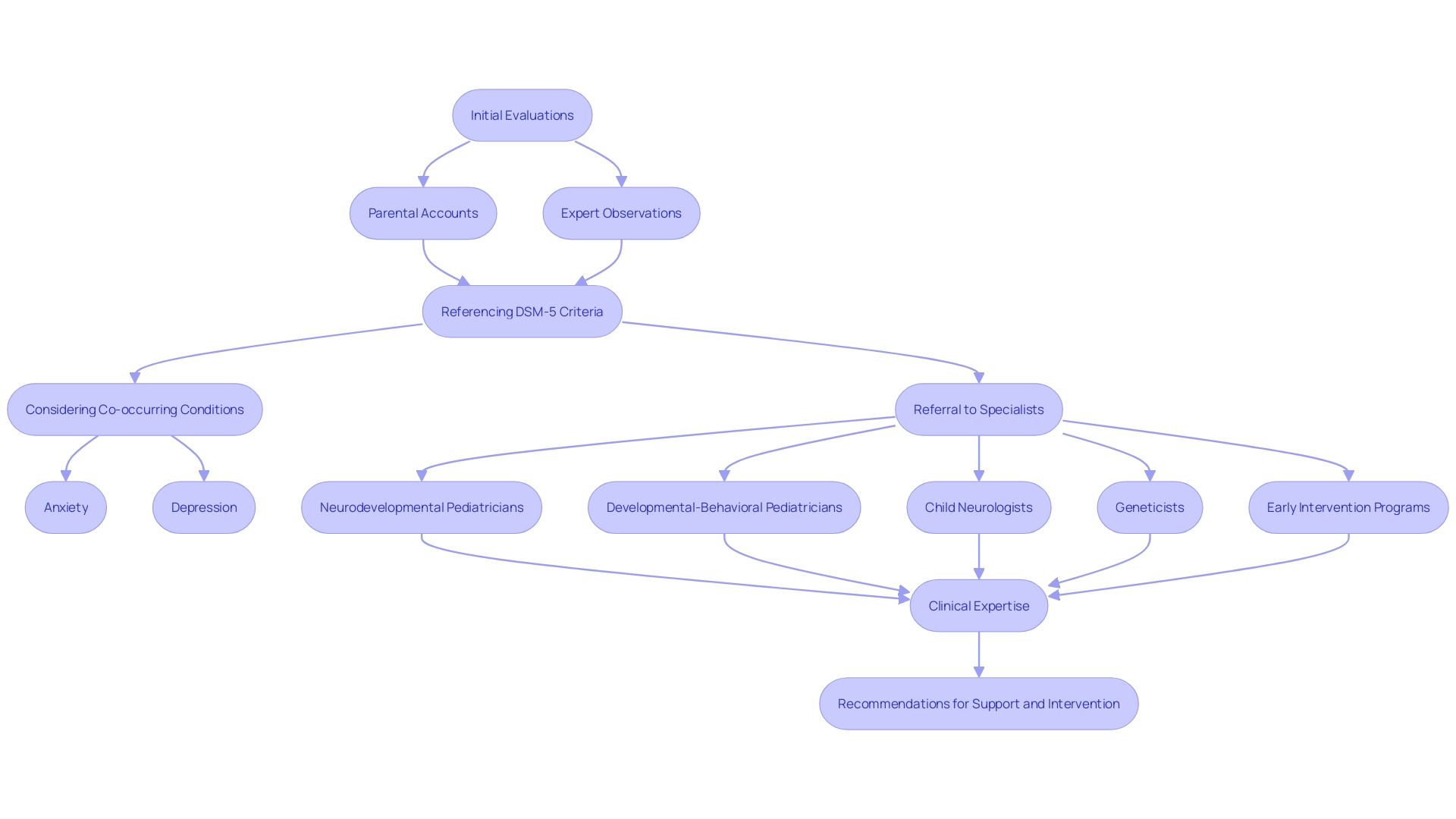
Challenges and Considerations in Adult Autism Diagnosis
Identifying this developmental disorder in adults presents significant challenges, often due to overlapping symptoms with other mental health conditions. For instance, depression and anxiety are more prevalent among individuals on the spectrum, complicating the diagnostic process. Furthermore, societal misconceptions about autism can lead to underdiagnosis or misdiagnosis. Christopher McDougle, the Nancy Lurie Marks Professor at Harvard Medical School, emphasizes that many individuals on the autism spectrum lose access to essential services upon reaching adulthood, exacerbating these challenges. He emphasizes the need for quality medical care for autistic people comparable to that of neurotypical people. This underscores the importance of persistence from individuals and their advocates in seeking comprehensive evaluations to ensure accurate diagnosis and access to appropriate support.
Conclusion
The exploration of autism spectrum disorder (ASD) in adults reveals the distinct and often overlooked challenges this population faces. Recognizing the signs and symptoms, such as difficulties in social interactions and heightened sensory sensitivities, is essential for fostering understanding and support. The alarming statistic that approximately 5.4 million adults in the U.S. are affected by ASD underscores the pressing need for specialized services that continue beyond high school, as many autistic individuals lose access to critical support once they transition into adulthood.
Seeking an autism diagnosis as an adult can be transformative, offering clarity and access to tailored resources that enhance self-awareness and coping strategies. Initiatives like the Adult Autism Health Resources aim to bridge the gap in care by educating clinicians and caregivers about the unique needs of autistic adults. This coordinated approach is vital for ensuring that individuals receive the ongoing medical care necessary for their well-being.
The diagnostic process itself requires a collaborative effort among various professionals, utilizing structured interviews and observational assessments to accurately capture the complexities of adult autism. Despite the challenges inherent in diagnosing autism in adults—such as overlapping symptoms with other mental health conditions and societal misconceptions—persistence in seeking comprehensive evaluations is crucial. By advocating for appropriate assessments and support, individuals can pave the way for improved quality of life and greater inclusion within society.
In summary, the journey toward understanding and supporting autistic adults is marked by the need for awareness, specialized care, and advocacy. By addressing these concerns, society can foster an environment where autistic individuals thrive, ensuring that they receive the recognition and resources essential for their personal and social fulfillment.




